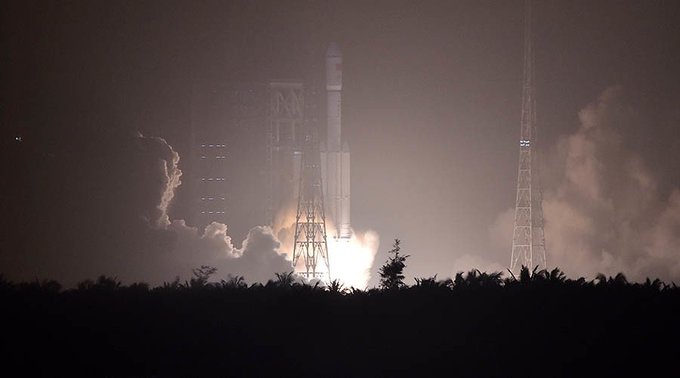‘Substantial’ ocean of water beneath moon’s surface could help create human colony
RT.com
Scientists who retested mineral samples collected during the Apollo moon missions now believe there’s a massive amount of water under the lunar surface – a discovery which may make manned missions to the moon easier than previously thought.
Researchers at Brown University in the US examined glass beads, a type of volcanic crystal gathered during the Apollo 15 and 17 missions in the 1970s, and found they contained similar volumes of water to Earth’s basalt rock.
The leaders of the study, which has been published in Nature Geoscience, cite the parallels as evidence that parts of the moon contain a similarly large amount of water. This, they believe, could be useful for future lunar missions as it means water could potentially be extracted rather than carried from home.
“Other studies have suggested the presence of water ice in shadowed regions at the lunar poles, but the pyroclastic deposits are at locations that may be easier to access,” said lead author Dr. Shuai Li, formerly of Brown University and now at the University of Hawaii.
“Anything that helps save future lunar explorers from having to bring lots of water from home is a big step forward, and our results suggest a new alternative.”
READ MORE: First-ever ‘moon’ bricks bring lunar colony a step closer (VIDEO)
Scientists used instruments and images from India’s Chandrayaan-1 lunar orbiter which bounced light off the moon to see which minerals are present.
It was previously thought that water could only be found on each of the moon’s two poles, but deposits of volcanic beads, formed when magma crystallized after rising to the surface, have been found far and wide across the lunar surface.
“The fact that they see this feature associated with the glasses tells us that there was indeed quite a bit of water in the interior of the moon when these volcanic eruptions were occurring,” says Anthony Colaprete, a NASA scientist who reviewed the paper.
The race to create the first manned lunar base has been heating up in recent years.
In April, the European Space Agency announced plans to partner with China on a ‘Moon Village,’ a 3D-printed cluster of lunar outposts that could one day serve as a stop-off point on a journey to Mars.
Groundwork for the Moon Village mission will begin in November, when China plans to send a probe to the moon to retrieve rock and soil samples. The Chang’e-5 mission will be China’s first ever attempt at sample retrieval in space.
___
http://www.rt.com/viral/397417-water-beneath-moon-surface/


